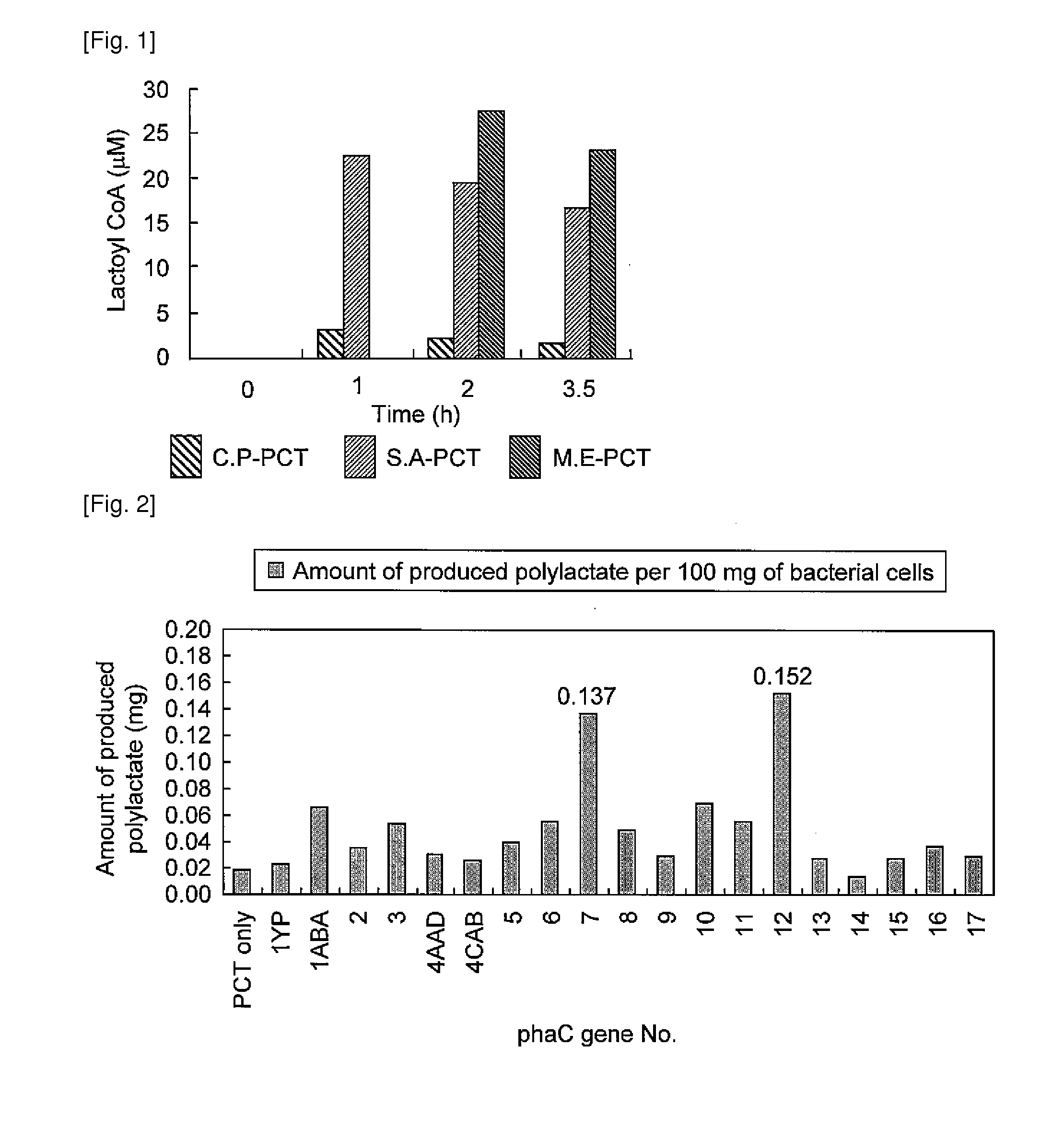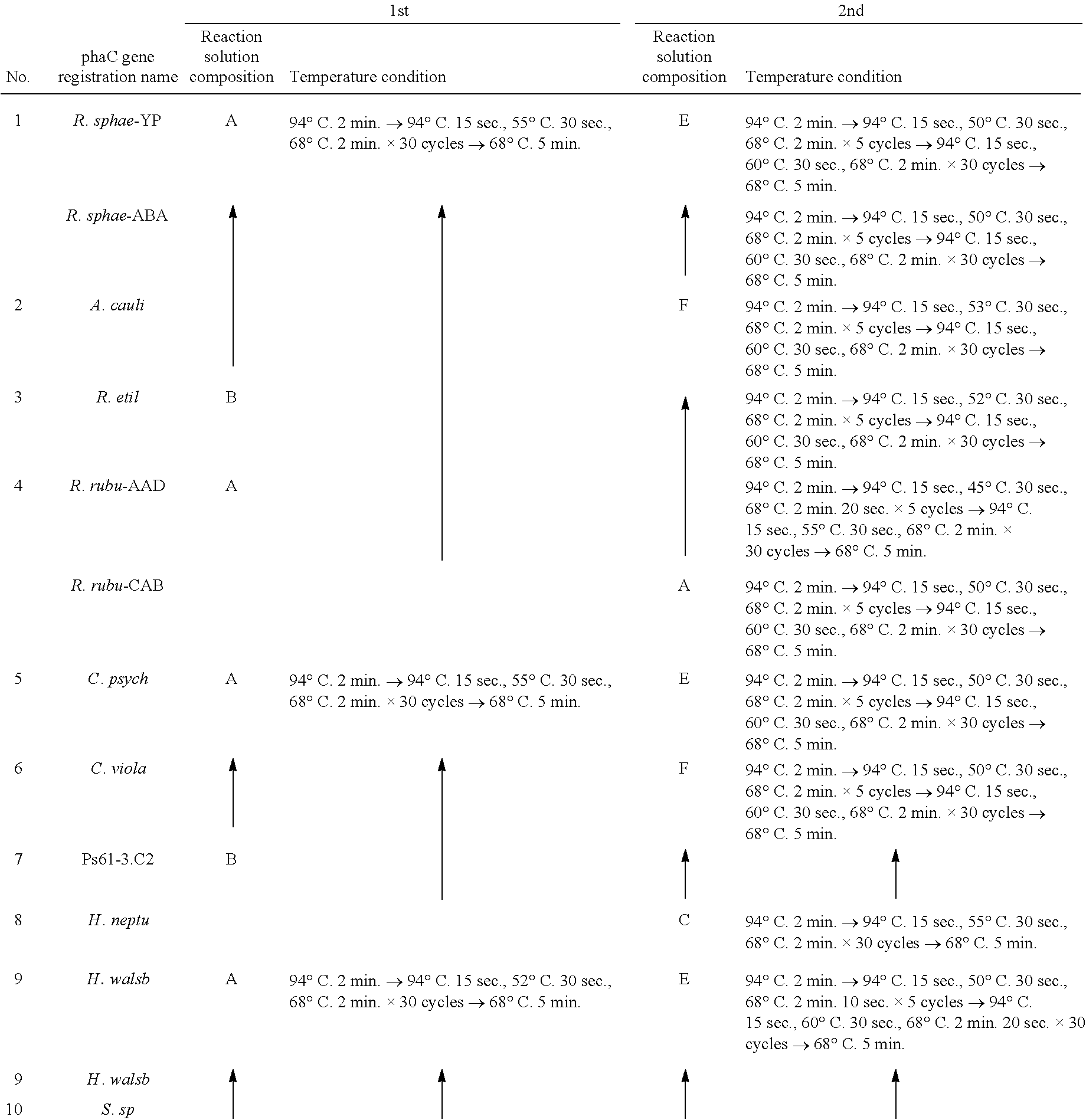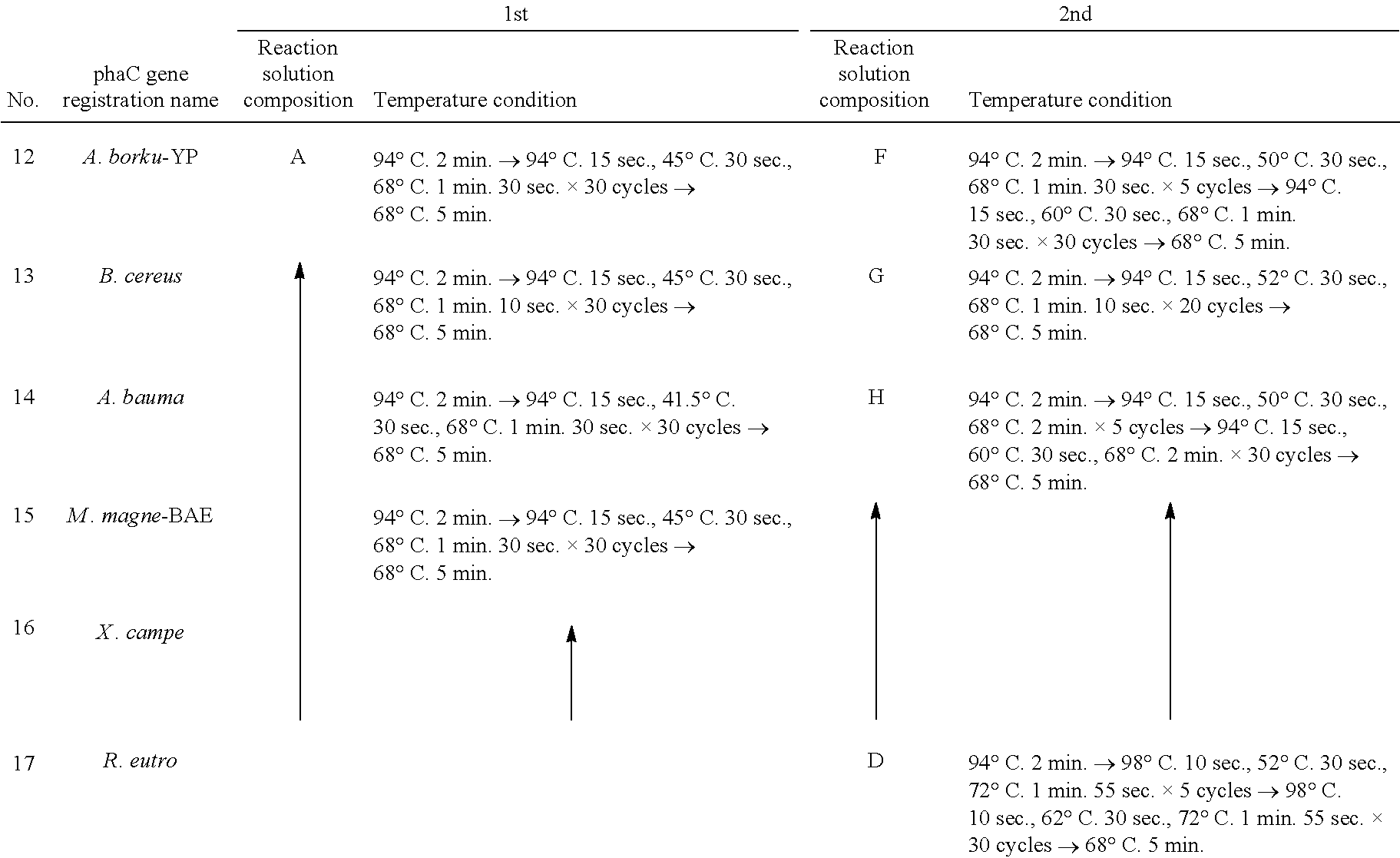Recombinant microorganism and method for producing aliphatic polyester with the use of the same
- Summary
- Abstract
- Description
- Claims
- Application Information
AI Technical Summary
Benefits of technology
Problems solved by technology
Method used
Image
Examples
example 1
Evaluation of a Variety of pct Genes
[0052]In this Example, the Clostridium propionicum-derived pct gene, the Megasphaera elsdenii-derived pct gene, and the Staphylococcus aureus-derived pct gene were evaluated regarding activity of converting lactic acid into lactate CoA. A pTV118N-C.P PCT vector, a pTV118N-M.E PCT vector, and a pTV118N-S.A PCT vector were prepared for introduction of the Clostridium propionicum-derived pct gene, the Megasphaera elsdenii-derived pct gene, and the Staphylococcus aureus-derived pct gene, respectively.
[0053]First, the genomes of M. elsdenii (ATCC17753), S. aureus (ATCC10832), and C. propionicum (ATCC25522) were obtained by a general method. Each pct gene was obtained by a PCR method. The following primers were used for amplification of a DNA fragment containing the M. elsdenii-derived pct gene: MePCTN: 5′-atgagaaaagtagaaatcattac-3′ (SEQ ID NO: 9); and MePCTC: 5′-ttattttttcagtcccatgggaccgtcctg-3′ (SEQ ID NO: 10). The following primers were used for ampl...
example 2
Evaluation of a Variety of PHA Synthase Genes
[0059]In this Example, a variety of PHA synthase genes were evaluated regarding the polylactate productivity in a case in which the genes were allowed to be expressed with the Megasphaera elsdenii-derived pct gene that had been evaluated as having significantly high activity of converting lactic acid into lactate CoA in Example 1. Table 1 lists PHA synthase genes examined in this Example. In table 1, for Rhodobacter sphaeroides (No. 1) and Rhodospirillum rubrum (No. 4), since a plurality of genes registered with different accession numbers have been found, such plurality of genes were examined.
TABLE 1DepositoryNoStrainAccession No.ClassorganizationNo1Rhodobacter sphaeroidesYP354337IATCCBAA-808DABA79557I2Azorhizobium caulinodansINBRC148453Rhizobium etli CFN 42I″155734Rhodospirillum rubrumAAD53179IATCC25903CAB65395I5Colwellia psychrerythraea 34HI″BAA-681D6Chromobacterium violaceumI″12472D7Pseudomonas sp. 61-3IIJCM100158Hyphomonas neptuniumI...
PUM
| Property | Measurement | Unit |
|---|---|---|
| Fraction | aaaaa | aaaaa |
| Volume | aaaaa | aaaaa |
| Volume | aaaaa | aaaaa |
Abstract
Description
Claims
Application Information
 Login to View More
Login to View More - R&D
- Intellectual Property
- Life Sciences
- Materials
- Tech Scout
- Unparalleled Data Quality
- Higher Quality Content
- 60% Fewer Hallucinations
Browse by: Latest US Patents, China's latest patents, Technical Efficacy Thesaurus, Application Domain, Technology Topic, Popular Technical Reports.
© 2025 PatSnap. All rights reserved.Legal|Privacy policy|Modern Slavery Act Transparency Statement|Sitemap|About US| Contact US: help@patsnap.com



